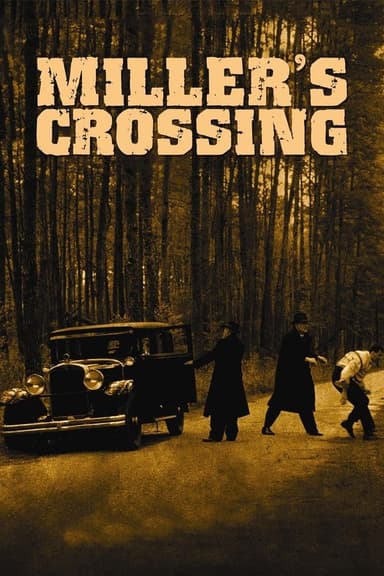
The Grifters
1990 • Crime, Drama • R
A small-time conman has his loyalties torn between his estranged mother and his new girlfriend, both of whom are high-stakes grifters with their own angles to play.
Runtime: 1h 50m
Why you should read the novel
Jim Thompson's novel, The Grifters, immerses readers in the seedy underworld of mid-century American crime, portraying grifting with an honesty and grit that no film can fully capture. The book delves into the flawed psyches of its characters, offering a complex, nuanced exploration of their motivations and intertwined relationships that the screen only touches upon. Through Thompson's evocative prose and sharp psychological insight, you not only watch the cons unfold—you understand the deep-rooted desperation and bleakness that drive these unforgettable antiheroes.
Reading The Grifters exposes you to the unfiltered darkness and psychological tension that made Jim Thompson a master of the noir genre. His writing style, taut and uncompromising, drags you into the minds of Roy, Lilly, and Moira, presenting their internal conflicts and moral ambiguity in a way that's impossible to replicate in a two-hour film. You'll find yourself haunted by the chilling authenticity of the characters’ voices and the sense of doom lurking on every page.
If you crave a more intimate, harrowing, and thought-provoking experience, the novel is essential reading. The Grifters is more than just a crime story—it’s a study of human nature at its most desperate and cunning. By reading Thompson’s original work, you gain access to a literary world where every con hides a deeper personal tragedy and every page brims with raw, palpable suspense.
Adaptation differences
One of the most significant differences between the film adaptation and Jim Thompson’s original novel is the tone and internal perspective. While the movie utilizes cinematic techniques—music, lighting, and sharp performances—to convey mood, the novel deeply inhabits the minds of its main characters. Thompson’s internal monologues give readers profound access to their thoughts, fears, and neuroses, often revealing details and motivations that the movie leaves unexplored or understated.
In the novel, the depth of Lilly Dillon’s character is much more pronounced. Thompson explores her abusive past, her psychological wounds, and her complex relationship with her son, Roy, with a rawness that is softened in the film for narrative expediency and audience palatability. The ambiguous and disturbing nature of their mother-son dynamic is more overt and unsettling in the book, highlighting themes of control, guilt, and dependency that are only hinted at on screen.
Another notable difference is the portrayal of violence and its consequences. While the movie is certainly brutal at times, Thompson’s book does not shy away from graphic depictions of physical and psychological pain. Scenes involving Moira, for instance, are more explicit and disturbing in the novel, offering a grittier and less polished view of the grifters’ world than what is depicted in the film adaptation.
Finally, the novel’s ending diverges from that of the movie in both tone and detail. The movie simplifies certain plot points for clarity or emotional impact, while Thompson’s conclusion is more ambiguous, emotionally cold, and in keeping with the relentless fatalism typical of his writing. These differences highlight why many consider the book a more unsettling and complex experience, offering layers of meaning and unease that linger long after the last page.
The Grifters inspired from
The Grifters
by Jim Thompson












